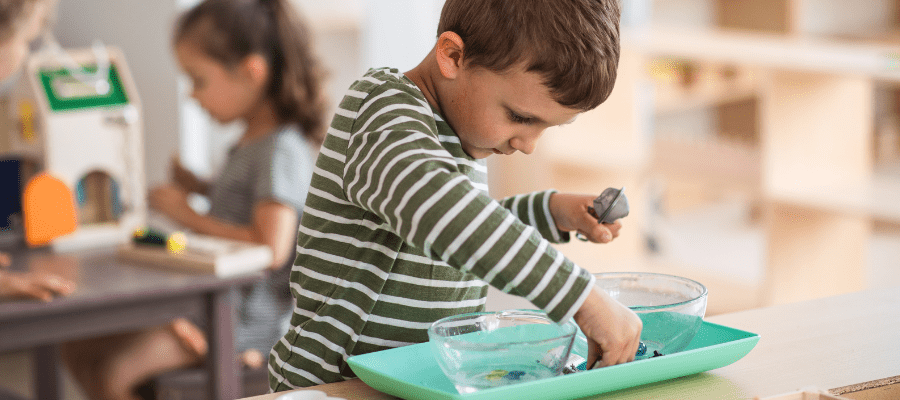
Montessori teachers can be heard often talking about the importance of the ‘prepared
environment’. What does this mean, and how do we make sure it works for the children?
The idea of a prepared environment is to make sure that the space the children work, rest and play in is set up to truly meet their needs. In a Montessori nursery, there will be a set of specially designed materials that are always present, as well as activities and resources that are tailored to the children’s needs and interests.
The beauty of the Montessori materials is that they appeal to children because of the way they are designed to match their developmental needs at any given moment. For this reason, there are some materials that will always be present – for example there will always be a series of pouring activities on the Practical Life shelf. What these activities look like might vary according to the culture, time of year, and children’s interests.
Whether we are looking at Montessori materials or additional activities to extend children’s learning, the environment must be beautifully prepared and ready for the children at all times. It is essential that it is inviting to the children so they can access it independently and with genuine excitement for what it has to offer their learning and development.
One tip is to sit on the floor (or ground if outside) and experience the space as the children do – to crawl through it so you see it from their height and perspective.
Once we have the overall feel and layout of the space working well, we can turn our attention to the detail. One Montessori principle is to lay the activities out on shelves so that they flow from left to right and simple to complex. What this does is offer the child a ‘map’ through the environment – once they have mastered one activity they can easily see which one to move onto next.
The materials must be in excellent condition, and complete – if there are pieces missing or broken it is incredibly frustrating for the child who is trying to work with them. They must also be beautifully presented on the shelf so that it is easy to see, inviting and easy to access.
Finally, we must remember that everything that applies to the prepared environment indoors, applies just as much outdoors. The space may be different – perhaps larger or smaller, perhaps with larger scale activities, and probably with more mud and water!
However, the same principles apply – we want children to explore with confidence, independence and a sense of ‘awe and wonder’. To facilitate this, we need to carefully prepare the space keeping in mind our knowledge of child development, of Montessori theory and of the needs and interests of the children.